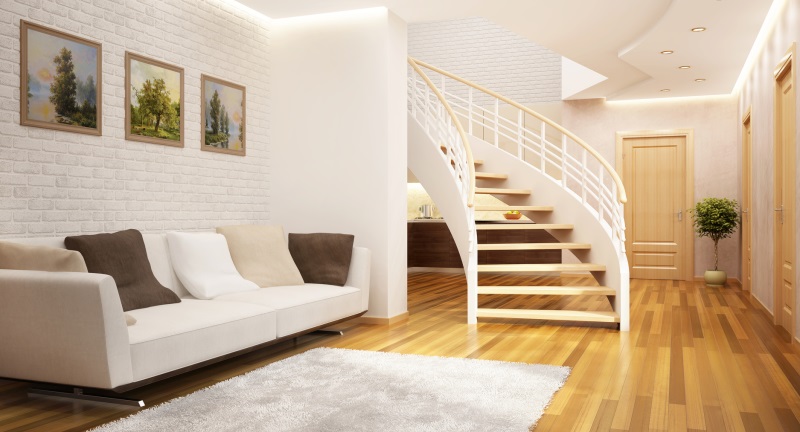Bamboo flooring as the name suggests is a type of flooring material made from bamboo. The bamboo flooring commonly used in American markets is a highly processed form of bamboo.
Bamboo is commonly used for flooring because it grows faster than traditional hardwood & the stem is cut leaving the root intact. So no replanting is required. It does not require fertilizers or pesticides either. It is a popular material for flooring for the following reasons:
- It is strong
- It is durable
- Looks similar to hardwood
- It is eco-friendly as detailed above
- More water resistant than hardwood
- Priced similar to hardwood
Facts and features about bamboo floors:
- Most bamboos used in different manufacturing sectors are sourced from China.
- A bamboo floor can change the ambience of your room. As it looks similar to hard wood floors, it provides a sleek & modern look to your room.
- Bamboo floors are not slippery and they can also be used as floating floors, or as floors for the deck of a ship. It is also easy to maintain. It only needs a dust mop or vacuum to remove the dust or dirt or at the most a grizzled brush to remove stubborn or sticky dirt.
- No need to wet mop. In fact, it is advisable not to use any wet mop on bamboo floor. Water, if left on the floor for some time, can cause warping.
- If over the time the floor looks discolored, appropriate sanding & applying finishing coats can restore its original look.

There are some things to take care of as well before you plan to install bamboo floors:
- It can get scratched easily say by claws of pet animals or sharp edges of furniture.
- Though water resistant to some extent, you still need to take care that water does not stay on it for long. A flood can completely destroy your bamboo floor.
- For the above two reasons, it may not be appropriate for use in a home which has small children.
- The carbonated bamboo often used for providing a darker color is less sturdy than the un-carbonated bamboo.
- All processed bamboo floors use urea formaldehyde as binders which are poisonous. Good bamboo flooring should have minimal quantity of formaldehyde binders.
- Also, there are reports that traditional forests are being cut down to plant more bamboo trees due to their economic viability. It is thus leading to deforestation thereby destroying the flora & fauna of many geographical regions.
- Also there are many grades to choose from, which can be confusing. There is no certification or standards to adhere to.
As an eco-friendly alternative:
- Bamboo flooring has become the flooring of choice for people looking for green & sustainable floor material.
- The installation is pretty simple. The individual panels can be interlocked for quick installation. Alternatively they can be nailed or glued to the floor.
- Bamboo floors are more popular for light commercial or corporate spaces where damage due to water or sharp edges is minimized.
- Engineered Bamboo Floors are the latest trend wherein layers are cross-laminated. This provides better dimensional stability and less effect of humidity on the bamboo floor.
- These cross laminated layer panels can be simply glued or nailed to one another to form the complete floor. These can be used for “floating floors” that is panels are glued together above a concrete floor. The whole floor moves as a single unit instead of individual boards.
Conversely solid bamboo floors have one directional layer and they require to be installed on the pre- existing floor. These are cheaper than engineered bamboo floors.
So, give your house a makeover, install bamboo flooring & enjoy the feel & luxury of hardwood floors.

